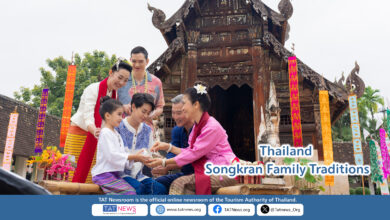Anyone who spends time getting to know the unique cuisine of Thailand understands that it is the interplay of strong flavours of sour, sweet, bitter, spicy and salty, to create a harmonious whole that makes a Thai meal so memorable. Salty flavours are especially popular here: salted eggs and fish are used in many dishes and fish sauce is the condiment of choice on every table in every restaurant and food stall in the land. The ever-salty fish sauce is used everywhere of course, as salt in shakers tends to clog together due to Thailand’s humidity.
As in many countries around the world, salt was first used in Thailand as a preservative in the days before refrigeration, but salty flavours are now an essential part of the Thai way of eating.
Of course, we are always being told to cut down on salt in our diets, but this vital element of life plays its part in a more health enhancing aspect of Thai culture – the spa industry.
A visit to a spa is on the wish list of everyone visiting Thailand, and most people submit themselves to the rigours of a famous traditional Thai massage when on holiday. But Thai salts are used in the popular exfoliating scrub massages, which are used by therapists to help remove dead skin cells to reveal the soft supple skin beneath. Thai salts boast excellent anti-bacterial properties and a salt scrub is a perfect antidote to the hot and humid Thai climate as they prevent itching, can relieve the sting of insect bites, and give skin a healthy glow. A salt scrub infused with that other famous Thai ingredient, lemon grass, helps relieve symptoms of jet lag and stress – surely this is the perfect start to any Thai holiday.
We know that salt is vital for life, but this is doubly true for some Thai communities as the mineral has provided a source of income for generations in the kingdom’s salt producing regions. These include Phetchaburi, Samut Sakhon and Samut Songkhram on the Gulf of Thailand near Bangkok and Pattani in the Deep South. Tourists heading to the popular beaches of Cha-am or Hua-Hin, or visiting the gorgeous summer palace of Maruekhathaiyawan, or the impressive hill palace of Phra Nakhon Khiri, built by King Rama IV will recall passing the dazzling salt fields, with the rectangular ponds that stretch as far as the eye can see.
These ponds are flooded with shallow sea water. These are left for around ten days until the sun evaporates all the water, leaving the salt to be collected and carried away in shoulder baskets to be bagged. This means it is very much a weather reliant industry and takes place in the hot season. It is hard and heavy work, and the salt means there is very little vegetation around to give shade to the workers.
But the locals are proud of their salt producing heritage, which is why a salt festival was started up in 2015 to celebrate the industry. The three-day Art of Salt Festival offers educational displays and talks, and there are always some amazing sculptures made by enterprising artists. Birds, people, whales and seabirds are crafted out of packed salt and are colourfully lit up in the evening when people come here to take pictures and enjoy local foods. A popular dish is the salt crusted fish, which are freshly caught before being stuffed with lemongrass – the salt crust covers the fish to keep the flesh moist and juicy when it is being grilled.
As well as the salt fields, Thailand’s Western Region boasts many interesting attractions. There are many famous canals that have floating markets. The most charming of these is the Tha Nam Khambhop Market that straddles the Phetchaburi River in the little farming town of Tha Yang. This has always been a trading market for local farmers and salt sellers, and even today it is a great place to come and do some shopping, or have a unique Thai meal while watching the locals go about their business. The busiest time is at the weekend when locals flood into Tha Yang to sell products or simply socialise. There are lots of different foods on sale, and it is possible to take boat tours around the local area and see sugar palm factories and old buildings.
The salt festival is a great place to learn about a traditional product and support one of Thailand’s most important grassroots industries, but it is just one of many such celebrations of Thailand’s culture that take place up and down the kingdom. Every village and town has its own products, culture and stories and they are all here waiting to be discovered in amazing Thailand – the land of wide smiles and wonderful stories.












